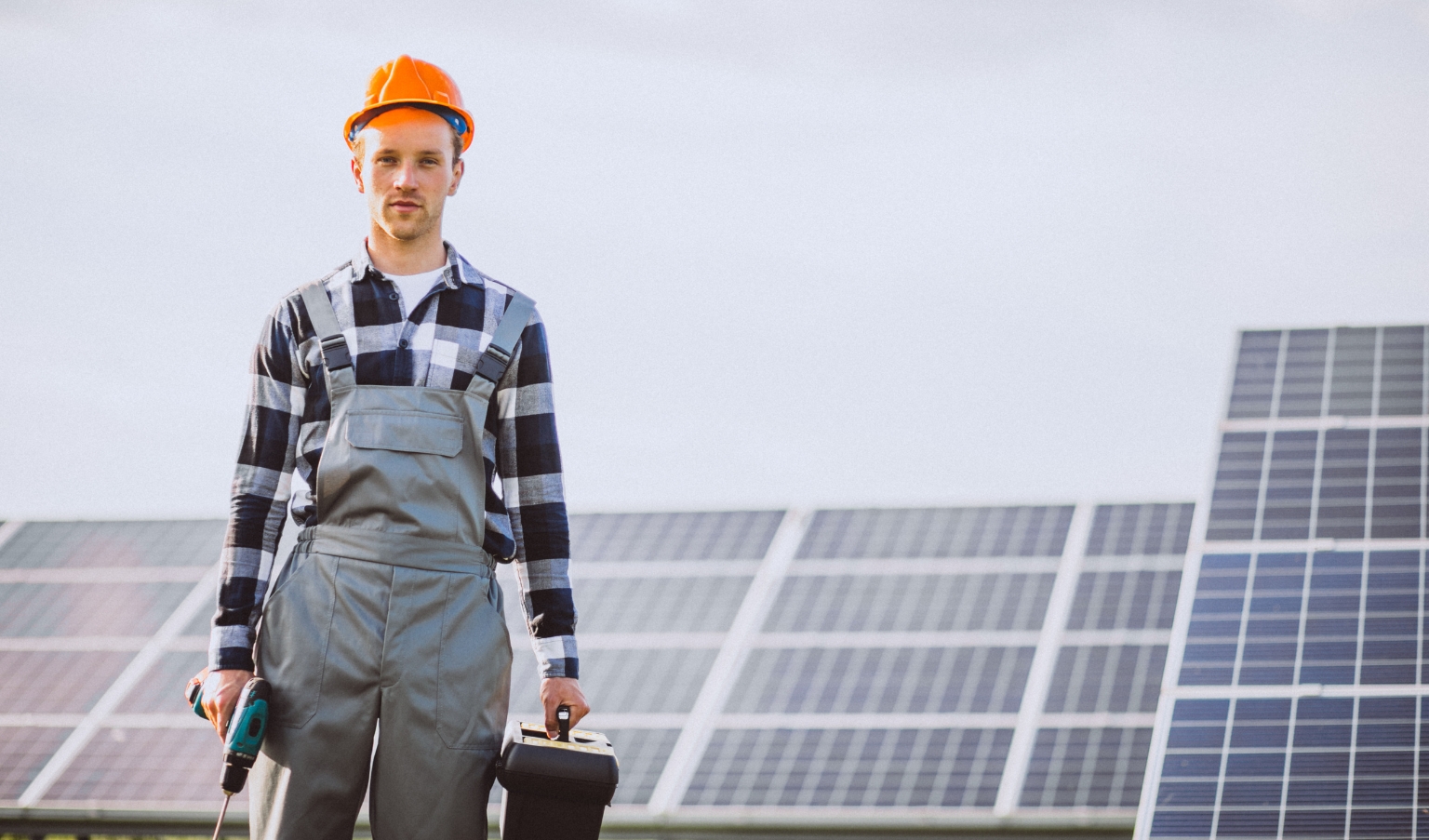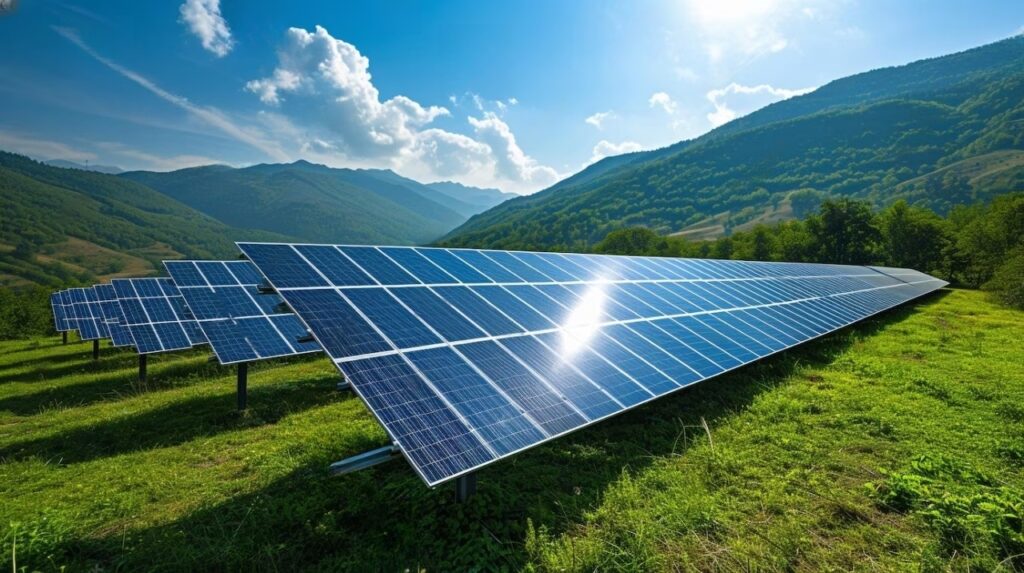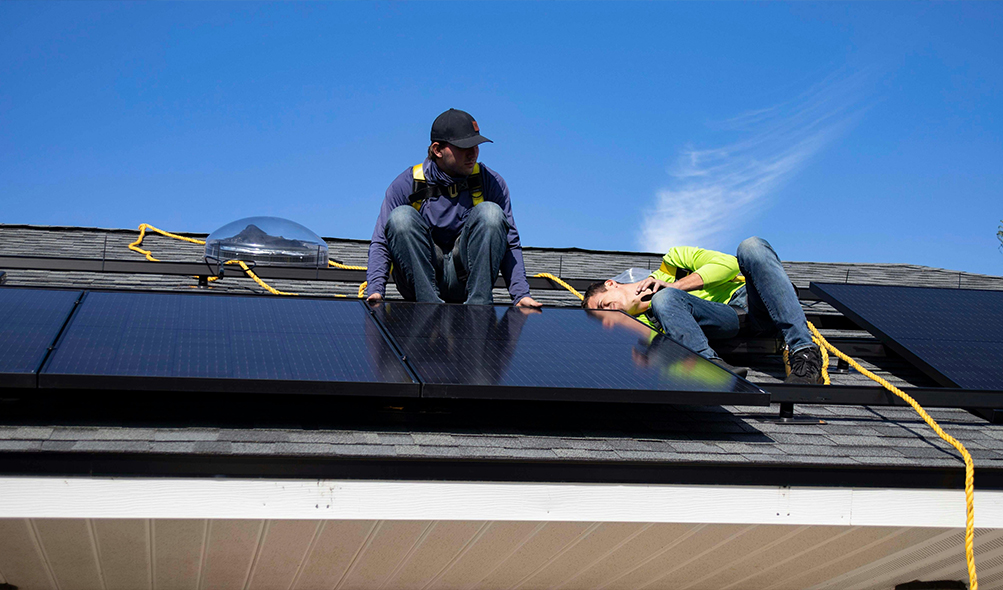The trend in the demand for clean energy is growing, and solar energy is one of the most popular types in the contemporary world. Currently, polycrystalline solar panels are more common in use because of their low cost, service life, and cost-performance ratio. These are panels that are used to convert light energy into electrical energy and are made up of silicon cells with several layers. Solar-sense advanced polycrystalline solar panels provide proper energy conversion, and they combine both technology and energy efficiency. All these panels are found at Shop Solar Sense, a reputable company in the renewable energy sector that provides reliable and efficient solar panel performance.
What are Polycrystalline Solar Panels?
Multi-crystalline solar panels, or polycrystalline panels, are manufactured from silicon crystal and are therefore characterized by a blue appearance with glass fragments like pieces. They have blue-colored PV cells with rectangular edges that appear straight and have lesser efficiency compared to monocrystalline cells. They are less expensive to manufacture for similar reasons and are generally more durable. Polycrystalline panels are more sensitive to heat and therefore have diminished productivity on the hottest daThus,Thus they are more costly, although durable,able and require more panels to produce the same electrical power output.
Difference Between Polycrystalline Solar Panels Vs. Monocrystalline
| Factor | Monocrystalline Solar Panels | Polycrystalline Solar Panels |
| Silicone Arrangement | One pure silicon crystal | Many silicon fragments melded together |
| Cost | More expensive | Less expensive |
| Appearance | Panels have black hue | Panels have a black hue |
| Efficiency | More efficient | Less efficient |
| Lifespan | 25-40 years | 20-35 years |
| Temperature Coefficient | Lower temperature coefficients, making them more efficient in heat | Higher temperature coefficients, making them less efficient in heat |
polycrystalline solar panels price
The oldest and most widely used solar panels on the market are polycrystalline solar panels. This means that the panel is an efficient part to utilize, with an efficiency rate of 16% to 17% in most cases. Thus, they remain the preferred choice of most consumers of solar energy. A polycrystalline solar panel is also referred to as poly solar panels, multi-Si solar panels, or many-crystalline silicon solar panels. There are a lot of crystals in each cell.
These panels are made up of silicon. Thus, to configure the cells of a polycrystalline panel, fragments of silicon are accumulated and melted to create the wafers. It is worth noting that poly crystal solar panels possess a kind of blue look. Also, none of the panels on the current can have round edges. In the outer structure of these panels, cells are square and the angles are uncut.
Polycrystalline Solar Panel Price List
Since the process of making polycrystalline solar panels is less energy-consuming and leaves minimal waste, the cost of these panels is considerably low. Polycrystalline solar panels are the cheapest solar panels on the market, as we learned from the above discussion.
It is determined by the size and power output of the panel. Polycrystalline solar panel price varies from $1 per watt to $1. $5. Of course, you will have to pay, as it depends on the capacity of that particular stall.

Which one is best for you, Monocrystalline or Polycrystalline Solar Panels?
Every solar panel has its pros and cons, and you can save excellent money on both of them. While for your convenience, you should consider the following factors when selecting the best solar panels:
When selecting between monocrystalline and polycrystalline panels, it is essential to consider various factors.
- Budget: Monocrystalline is more efficient but higher-cost, ideal for higher budgets, while polycrystalline is more affordable and still offers good performance.
- Space Availability: Monocrystalline panels generate more power per square foot, ideal for limited spaces, while polycrystalline panels require more space for larger areas.
- Aesthetic Preferences: Consider monocrystalline for a sleek black appearance, blending well with rooftops, and polycrystalline for a blue color with a less uniform look, depending on your aesthetic preferences.
- Climate and Temperature: Monocrystalline solar cells perform better in high-temperature and low-light conditions, ideal for regions with less consistent sunlight, while polycrystalline cells are more sensitive to temperature increases, slightly reducing efficiency in hot climates.
- Energy Needs: Monocrystalline solar panels offer higher efficiency for high energy demands, particularly in limited space, while polycrystalline panels are suitable for moderate energy needs with more installation space.
- Long-Term Investment: Monocrystalline and polycrystalline solar panels have higher upfront costs but potentially lower long-term costs due to higher efficiency and better performance over time.
Pros and Cons Polycrystalline and Monocrystalline Solar Panels
Monocrystalline Solar Panels:
Pros
- High Efficiency
- Space-efficient
- Better performance in low-light, high-temperature conditions
- Aesthetically pleasing
Cons
- Higher cost
Polycrystalline Solar Panels:
Pros:
- Lower cost,
- Efficient,
- Durable.
Cons:
- Lower efficiency,
- Less uniformity,
- Temperature sensitivity.
Polycrystalline Solar Panels Efficiency
The polycrystalline panels are slightly less efficient, with efficiency ratings commonly falling to within 13–16 percent. Monocrystalline panel efficiency is higher than that of polycrystalline panels in the range of 15-20%. This means they are not as space-effective as they have a lower efficiency rate per unit area since they generate less power.
Our Address and Contact Information
Visit us at our convenient location in Azadpur:
- Solar Sense
- 13 Main GT Road, Azadpur, Delhi-110033
- Contact Number: +91-8130025257
- Email: info@solarsense.in
Get in touch with Azadpur
Ready to make the switch to Polycrystalline Solar Panels? Contact Solar Sense today to schedule a consultation and find out how we can help you harness the power of the sun.
- Phone: +91-8130025257
- Email: info@solarsense.in
Stay connected with us for the latest updates and offers on our solar solutions.




















